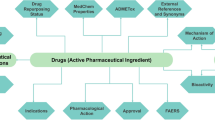Abstract
The research and development (R&D) process of Chinese medicine, with one notable feature, clinical application based, is significantly different from which of chemical and biological medicine, from laboratory research to clinics. Besides, compound prescription is another character. Therefore, according to different R&D theories between Chinese and Western medicine, we put forward a new strategy in drug design of Chinese medicine, which focuses on “combination-activity relationship (CAR)”, taking prescription discovery, component identification and formula optimization as three key points to identify the drugs of high efficacy and low toxicity. The method of drug design of Chinese medicine includes: new prescription discovery based on clinical data and literature information, component identification based on computing and experimental research, as well as formula optimization based on system modeling. This paper puts forward the concept, research framework and techniques of drug design of Chinese medicine, which embodies the R&D model of Chinese medicine, hoping to support the drug design of Chinese medicine theoretically and technologically.
Similar content being viewed by others
References
Wu JA, Ji RY. Application of QSAR in drug design. Foreign Med Sci·Pharm Sect (Chin) 1989;16(1):8–16.
Xu HY, Tang SH, Chen JX, Li DF, Chen C, Yang HJ, et al. Thinking and strategy on combination-activity relationship (CAR) of Chinese medicine based on metabonomics. World Sci Technol-Modern Chin Med (Chin) 2011;13(1):30–35.
Yang HJ, Chen JX, Tang SH, Li ZK, Zhen YS, Huang LQ, et al. New drug R&D of traditional Chinese medicine—role of data mining approaches. J Biol System 2009;17:329–347.
Tang SH, Chen JX, Li G, Wu HW, Chen C, Zhang N, et al. Research on component law of Chinese patent medicine for anti-influenza and development of new recipes for antiinfluenza by unsupervised data mining methods. J Tradit Chin Med 2010;30:288–293.
Lu P, Li J, Tang SH, Chen JX, Zuo XH, Liu X, et al. Development and application of traditional Chinese medicine inheritance support system. Chin J Experim Tradit Med Formul (Chin) 2009;18(9):1–4.
Chen C, Chen JX, Wu HW, Tang SH, Li G, Yi JQ, et al. Identification of key constituents in volatile oil of Ligusticum Chuanxiong based on data mining approaches. Pharmaceut Biol 2011;49:445–455.
Xu HY, Huang LQ, Lu P, Yang HJ. Modernization research thoughts of Chinese medicine based on in vivo ADME process and network pharmacology. China J Chin Mater Med (Chin) 2012;37:142–145.
Author information
Authors and Affiliations
Corresponding author
Rights and permissions
About this article
Cite this article
Yang, Hj., Shen, D., Xu, Hy. et al. A new strategy in drug design of chinese medicine: Theory, method and techniques. Chin. J. Integr. Med. 18, 803–806 (2012). https://doi.org/10.1007/s11655-012-1270-x
Received:
Published:
Issue Date:
DOI: https://doi.org/10.1007/s11655-012-1270-x




